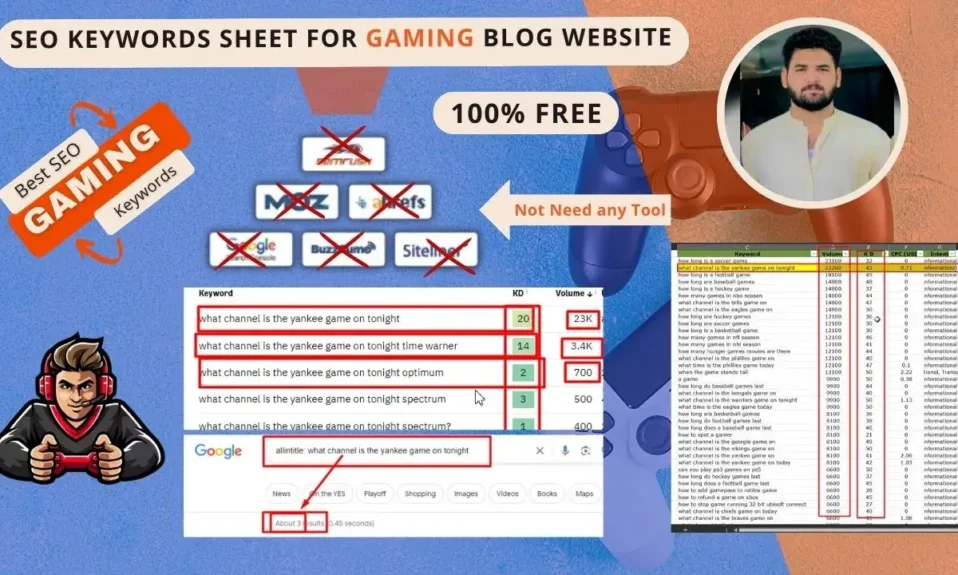
Practically 6 billion people currently use the internet, making it one of the vital important applied sciences for our trendy age. We use it for buying, leisure, schooling, healthcare, banking, and so many different sides of each day life. Regardless of this, the web as we all know it has existed just for the previous couple of many years, which is lengthy after many regional accessibility legal guidelines had been applied.
What many people, organizations, and governments are actually grappling with globally is how to make sure our digital world works effectively for everybody, together with people with bodily and cognitive impairments.
On this article, we discover the place the digital accessibility business is headed. From authorized shifts to the affect of AI, be taught in regards to the traits and applied sciences guiding the way forward for on-line accessibility.
accessibility lawsuit against Domino’s Pizza in 2018 opened the floodgates on authorized motion in opposition to non-public sector firms for his or her inaccessible web sites. What adopted was a surge in demand letters and lawsuits underneath the People with Disabilities Act (ADA), with practically a 50% increase in accessibility lawsuits between 2017 and 2021. The COVID pandemic additional utilized strain as many extra folks started counting on digital providers to satisfy their wants. In response, many governments globally adjusted their accessibility legal guidelines to account for web sites and digital properties, together with the Canadian AODA in 2021 and the US Division of Justice issuing guidance that the ADA applies to web accessibility in 2022.
Right now, these lawsuits are declining as extra organizations handle their accessibility points and more businesses are embracing digital accessibility for reasons other than lawsuit avoidance. Procurement contracts issued by governments, instructional establishments, and private-sector expertise firms are more and more requiring accessible expertise inside their mission scopes, which locations extra emphasis on accessibility as a enterprise profit. Variety, Fairness, and Inclusion (DEI) initiatives are additionally making use of pressures each inside organizations and externally for extra accessible expertise to be launched. Organizations are additionally realizing that the rise in accessible employment and productiveness expertise allows extra people with bodily and cognitive impairments to enter the workforce.
Organizations are additionally paying additional consideration to the business case for accessibility, together with its potential to assist firms faucet into the underserved market of people with impairments (who’ve international discretionary spending estimated at $6.9 trillion), enhance model notion, and drive additional innovation. Plus, digital groups have realized that accessibility best practices also align with best practices in SEO, usability, QA testing automation, and different core business principles.
As time goes on, organizations proceed to turn into extra subtle of their pondering and pay extra consideration to the various advantages of inclusion and digital accessibility that stretch effectively past authorized compliance.
ADA applies to web content, although, disappointingly, this up to date steerage lacks a quotation to a selected technical commonplace for digital entry. The Division of Justice is, nonetheless, anticipated to satisfy in 2023 to review amending Title II ADA to provide technical standards for public entities to adjust to. Whereas this may make clear steerage for public entities, possible anchoring necessities in WCAG, there isn’t any point out of personal sector firms — which may leave private businesses in a legal grey area for years to come back.
Digital accessibility legal guidelines within the EU
Elsewhere on the earth, the European Union’s current European Accessibility Act goals to standardize accessibility necessities throughout bodily and digital areas, and throughout each private and non-private sectors. The Act was introduced in April 2019 and adherence to its requirements will likely be totally required as of June 28th, 2025.
Digital accessibility legal guidelines within the UK
In the UK, public sector organizations are nonetheless topic to the Equality Act of 2010 and Accessibility Regulations 2018 that are met through WCAG 2.1 compliance. Non-public sector organizations are solely held to this legislation when performing public functions, that are features usually dealt with by public sector organizations offering healthcare, utilities, or schooling. Whereas the UK shouldn’t be a member state of the European Union and will select to not transpose the European Accessibility Act, any UK organizations selling into EU member states would be subject to its accessibility requirements.
Digital accessibility legal guidelines in Canada
In Canada, organizations are ruled each by federal legal guidelines and the legal guidelines of their province. Authorities companies have lengthy been held to the WCAG 2.0 AA commonplace via Canada’s Standard on Web Accessibility, first applied in 2011. Extra just lately, the Trudeau administration enacted the Accessible Canada Act in 2019 which applies to federal public sector companies, Crown Companies, and federally regulated organizations. This legislation established accessibility roles together with a Chief Accessibility Officer, Accessibility Requirements Canada to outline and implement accessibility requirements, and new monitoring and enforcement necessities. One of many newer and important provincial modifications got here from the Accessibility for Ontarians with Disabilities Act (AODA) which requires public organizations and companies with 50+ workers to comply with WCAG 2.0 AA as of January 2021.
Lastly, the 2023-2024 plan for Accessibility Standards Canada contains drafting (and making out there for public suggestions) requirements on info and communication applied sciences, which is predicted to align with WCAG given the precedent by the Canadian authorities.
For organizations with out clear steerage on which technical requirements to stick to or how finest to supply an accessible expertise to customers, the advice of the QualityLogic accessibility workforce is at all times to look to probably the most present and universally accepted web site accessibility commonplace. At present, that’s WCAG.
tools do not identify all accessibility issues as a result of subjective nature of WCAG and don’t inherently decide accessibility, they help people in figuring out widespread accessibility points and prioritizing which issues to deal with first. Many main organizations are utilizing digital accessibility instruments along side human specialists as this provides the simplest strategy to delivering accessible content material and experiences.
Along with accessibility analytics instruments that assist web site managers establish points, there’s one other well-liked class of accessibility instruments referred to as “overlays” which purport to make the consumer’s expertise extra accessible. These instruments are widgets that sit atop a web site and try to repair issues within the rendered code — nonetheless, these instruments do not achieve full compliance and may degrade the expertise for assistive expertise customers.
The WebAIM 2021 Survey of Web Accessibility Practitioners confirmed that 72% of respondents had an unfavorable view on the effectiveness of overlay instruments and a 2022 New York Times article, titled “For Blind Web Customers, the Repair Might be Worse Than the Flaws,” showcased what number of blind customers discover overlays make web site utilization tougher.
QualityLogic has noticed many organizations pivoting to utilizing accessibility options just like the Lumar platform to scan, monitor, and establish accessibility points at scale and over time, whereas pairing that with human-led evaluation and remediation. As well as, we see better success with accessibility when finest practices, steerage, and insurance policies are utilized all through web site and software program improvement as a steady observe quite than approaching it as a one-time repair. As extra organizations embrace the advantages of accessibility, and as laws continues to develop, we anticipate this working mannequin to turn into the brand new norm.
computer vision, natural language processing (NLP), and machine learning. Laptop imaginative and prescient could automate picture recognition that, when paired with NLP, can render photos into coherent textual content for display screen reader customers. This expertise has been round for some time however earlier iterations have produced poor ends in many contexts. Current developments could begin to shift its usefulness.
Machine studying algorithms can help within the identification of internet accessibility points. Most points are subjective and require human evaluation, however developments in machine intelligence could possibly play a extra precious position in situation identification at scale. This will scale back the time funding of human auditors, focusing their efforts on reviewing the efficiency of AI programs or complicated points.
WCAG 2.2 is in draft format and deliberate for launch in 2023 Q3. This new model provides further necessities round goal measurement, focus look, and associated success standards. It additionally removes the 4.1.1 Parsing criterion as it’s at the moment out of date. WCAG 2.2 is beneficial to view as a reference for what could come, nonetheless as it’s nonetheless in draft solely, it’s not but appropriate to type the premise of coverage and requirements. For that, QualityLogic recommends adhering to the present business commonplace which is WCAG 2.1.
On the horizon as effectively is WCAG 3. Traditionally, the Net Accessibility Initiative (WAI) at W3C has saved requirements for internet content material (WCAG), consumer brokers comparable to browsers or video gamers (UAAG), and authoring instruments like content material publishing or social media platforms (ATAG) separate. Nonetheless, as expertise continues to advance and to deal with the wants of customers with impairments extra comprehensively, WCAG 3 will incorporate all three and partially lengthen the ATAG and UAAG tips. These won’t deprecate WCAG 2, however quite construct upon prior requirements and function a extra complete information for all. WCAG 3 entered a working draft in January 2021 and nonetheless has many open points. It’s not anticipated to be accomplished for a number of years.
WebAIM Million, which experiences the accessibility of the highest million house pages, confirmed that in 2023 over 95% of homepages nonetheless have WCAG 2 accessibility points. This can be compounded by the rising complexity of internet pages over current years. Authorities and social media web sites have a tendency to indicate probably the most enchancment.
There may be definitely a chance for enchancment, and it’s QualityLogic’s perception that the actions taken immediately will result in a future the place web sites, software program, and expertise supply a way more inclusive expertise. If you happen to’d wish to be taught extra about digital accessibility and how you can turn into compliant with probably the most present requirements, we’d like to share extra info. You will discover us at qualitylogic.com or on LinkedIn.
#Future #Web site #Accessibility #Rising #Traits #Applied sciences











